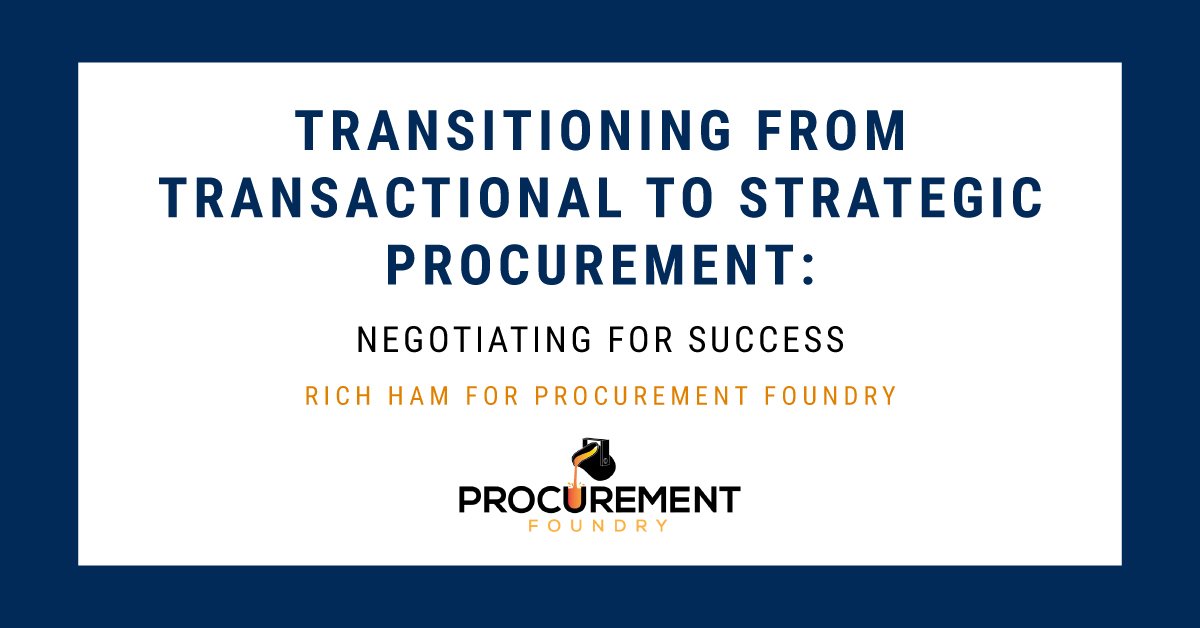Maximizing Savings Opportunities and Procurement's Strategic Value for CPOs
Saving money is not always about pinching pennies: advanced and data-driven insights enable you to identify real cost-saving opportunities, negotiate...
2 min read
![]() Richard Ham
:
4/9/20 5:49 AM
Richard Ham
:
4/9/20 5:49 AM

Procurement instinctively seeks the relative certainty and security that comes in the form of a contract.
Procurement professionals tend to believe that once a contract is negotiated that promises savings in the form of lower per-item costs, the job is done. But are those savings real beyond the initial bump? In other words, will the projected savings materialize on the corporate bottom line in the form of realized savings?
How frequently is greater overall value creation forfeited in the “blind” pursuit of savings?
The purpose of this article is to examine the above question, including the reasons why procurement has historically focused exclusively on savings.
How do you define savings? For most, savings is the difference between what you paid in the past versus what you will pay going forward. It sounds simple, but of course it is not—especially in ever-changing landscapes.
As many large, mature companies have discovered, even the best negotiated savings figures still fall short of the full opportunity for value creation.
In looking to lower their purchasing costs for indirect materials, one company decided to employ a vendor compression strategy, also known as supplier rationalization. They were going to reduce the number of suppliers from whom they made purchases so that they could negotiate higher volume discounts.
This seems like a straightforward plan—consolidate suppliers, reward the winning suppliers with more business, and in return, they will give you lower prices.
There was one catch. With the significant reduction in their supplier base, there was also an equally, if not greater, reduction in the intelligence of their spend data. Now, as inevitable changes began to affect their accounts, and with fewer data points to consult from the newly consolidated supplier base, knowing whether the deals were remaining competitive over time had become significantly more difficult.
In fact, this company was surprised to discover that over a relatively short period, they were paying an average of 23% above optimal market cost levels for most of these purchases. Over time, the “savings” became an illusion. What was real, however, was the size of the checks they were writing.
Real cost savings requires a sustainable strategy for actually shrinking the size of supplier payments. The only way to do this is through a continuous and diligent “nose to tail” category management approach. Effective sourcing and contract negotiations are, of course, important. But having a strategy which also contemplates continuous deal enforcement, assurance of competitiveness, and responsiveness to inevitable change is critical if savings is to really materialize as planned.
Some readers might think that the above revelation, and others like it, represent welcome news to the procurement world. After all, being able to transition from the blind pursuit of savings at all costs (transactional procurement) to one in which there are measurable and sustainable outcomes (strategic procurement) elevates the individual and collective value of the profession.
There is a lingering fear of success associated with moving from transactional procurement to full strategic relevance. For many in procurement, this transition is a greater threat than savings turning out to be an illusion.
Among the reasons for this phenomenon are:
We must examine these three barriers to success in greater detail as well as procurement’s long-overdue transformation from transactional to strategic.
In the meantime, ask yourself the following question: Am I actively facilitating strategic procurement success, or am I resisting it?
Rich Ham, guest author for Procurement Foundry
Rich Ham, the CEO of Fine Tune, which partners with companies to source, negotiate, manage and audit certain burdensome expense programs.

Saving money is not always about pinching pennies: advanced and data-driven insights enable you to identify real cost-saving opportunities, negotiate...

The topic of our recent roundtable discussion with a dozen Procurement Foundry community members—exploring potential flaws in procurement incentive...

Every 30 days or so, I get the same alert on my phone—“Your electricity bill is available for viewing.” I take a quick look, make sure nothing seems...